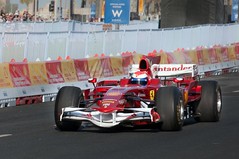GETTING OUT OF THE FAST LANE- at least for a little while.
In the last post I talked about how while habits are necessary, over time they can get in the way of moving well. I also talked about paying attention to how we are moving as the first step toward changing that. When we move quickly we can only do what is habitual. Part of moving with attention involves slowing down. This is not to say moving quickly is a bad thing- only that in the process of exploring different and better ways, slow is the way to go.
Try this out-
Reach for something overhead quickly. How many details can you sense about where the movement started and what parts other than your arm are involved in the process? Now do the same thing very slowly. You probably will be able to feel more detail, especially if you direct your attention that way.
I know from personal experience, as well as from working with clients, that if we use more of ourselves like our shoulder blades and backs when we reach, we are less likely to end up with shoulder pain- or if we already have it- it will be more likely to go away. Distributing effort through more of you is another aspect of moving well- and the likely topic for a post some day.
But back to slowing down- reach again very slowly and see if you can sense and include movement in your shoulder blades and back and expansion of your ribs as you reach.
Was it easier to get to the object? Over time the new way of reaching becomes habitual and you can do it more quickly.
So next time something is difficult or painful really slow down as you begin to pay attention. What is going on and how might you be able to change that? Think especially about sharing the load among body parts.
Again, when trying to change a habitual pattern or habit or when learning something new- slow is the way to go.
Until next time-Marsha
P.S. I would like to express my sincerest gratitude to my teacher Anat Baniel for helping me articulate the conditions that help the brain improve how we move.


